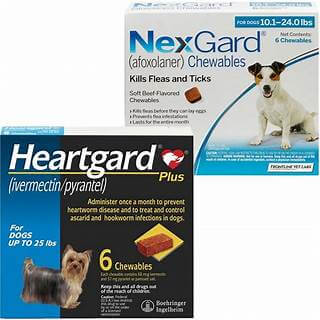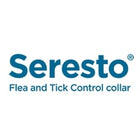
Whipworms are intestinal parasites that latch onto the lining of your pet’s intestines, leading to health issues such as diarrhea, weight loss, and anemia. Understanding how to prevent and treat whipworm infections in dogs and cats is crucial for maintaining their health and well-being.
What Are Whipworms?
Whipworms are parasitic worms that typically infect the cecum—where the small and large intestines meet in dogs and cats. These parasites latch onto the lining of your pet's intestines, feeding on their blood and leading to irritation, blood loss, and possible nutrient deficiencies. Whipworms start as microscopic eggs, which pets can ingest from contaminated environments. Once inside the body, they can grow up to three inches long. Their shape resembles a whip, thicker at one end and tapering at the other, giving them their name.
Symptoms of Whipworm Infections in Cats
A mild whipworm infestation might not show any noticeable symptoms in the initial stages. However, your cat may exhibit signs of discomfort and illness as the parasite load increases. Common symptoms include:
- Persistent diarrhea
- Unexplained weight loss
- Signs of inflammatory bowel disease
- Dehydration
In more severe cases, whipworms can cause damage to the colon, leading to bleeding. Signs of a severe infestation include:
- Bright red blood in the stool
- Anemia, indicated by pale gums and lethargy
Causes of Whipworm Infections in Cats
Cats typically contract whipworm infections by ingesting contaminated food, water, or prey such as rodents and birds. Whipworm eggs, larvae, or adult worms may be present in these sources. Understanding how these parasites thrive can help you prevent infections:
- Whipworms attach to the mucosal lining of the cecum or colon in cats, where they feed and lay eggs.
- These thick-shelled eggs are excreted in the feces, contaminating soil and water. Within 1-2 weeks, the eggs become infective in the environment.
- Cats can become infected by drinking from outdoor water sources, licking their paws after walking through contaminated areas or consuming infected prey.
A single female whipworm can lay up to 2,000 eggs a day, making it easy for infections to spread if not addressed.
Diagnosis of Whipworm Infections in Cats
If your cat is experiencing symptoms like weight loss, diarrhea, or blood in the stool, it's important to consult your veterinarian. A whipworm infection can be diagnosed through a fecal examination:
- Your vet will request a fresh stool sample from your cat to check for whipworm eggs.
- The sample undergoes a fecal flotation test, where it is mixed with a solution and spun in a centrifuge to separate the eggs from the waste.
- Whipworm eggs, thick-shelled and shaped like footballs, rise to the top and can be identified under a microscope.
Treatment of Whipworm Infections in Cats
Whipworm infections in cats are usually treated on an outpatient basis with antiparasitic medications. Common treatments include:
- Mebendazole
- Fenbendazole
- A combination of febantel, praziquantel, and pyrantel pamoate
In severe dehydration or anemia cases, your cat may require intravenous fluids or other supportive care. Your veterinarian may recommend anti-inflammatory drugs to soothe intestinal irritation and support the healing process.
Recovery from Whipworm Infections in Cats: What to Expect and How to Care for Your Pet
Ensuring your cat fully recovers from a whipworm infection requires completing the prescribed treatment and maintaining proper hygiene. With timely care, most cats show improvement within a week, and full recovery is expected in mild to moderate cases.
What to Expect During Recovery
- Visible Improvement in 7 Days: Non-severe whipworm infections often show signs of improvement within seven days of starting treatment. However, continuing the medication as your veterinarian prescribes is essential, even if your cat appears better.
- Complete Recovery: Your cat should fully recover with consistent care and proper treatment. However, regular follow-ups with your vet are recommended to ensure the infection has cleared completely.
Post-Treatment Care Tips
-
Maintain a Clean Environment: As the anti-parasitic medication takes effect, your cat will pass the dead whipworms through its stool. To prevent re-infection:
- Clean the litter box thoroughly every day.
- Wash your cat’s bedding, toys, and other frequently used items.
- Disinfect areas where your cat spends most of its time.
- Practice Good Hygiene: Whipworm eggs can survive in the environment, and though rare, there is a slight risk of transmission to humans.
- Be sure to wear gloves when handling contaminated items or cleaning your cat's litter box.
- Wash your hands thoroughly with soap and water after cleaning.
- Isolate Your Cat During Treatment: To prevent spreading the infection to other pets in your household, it’s a good idea to keep your cat in a separate, clean area until the treatment is complete and your vet confirms recovery.
Final Thoughts
Proper post-treatment care is as important as the medication in ensuring your cat fully recovers from a whipworm infection. Maintaining cleanliness, practicing good hygiene, and following your veterinarian’s advice can help your cat recover quickly and prevent future infections. Contact your veterinarian immediately for further guidance if you notice any ongoing symptoms or new health concerns.






